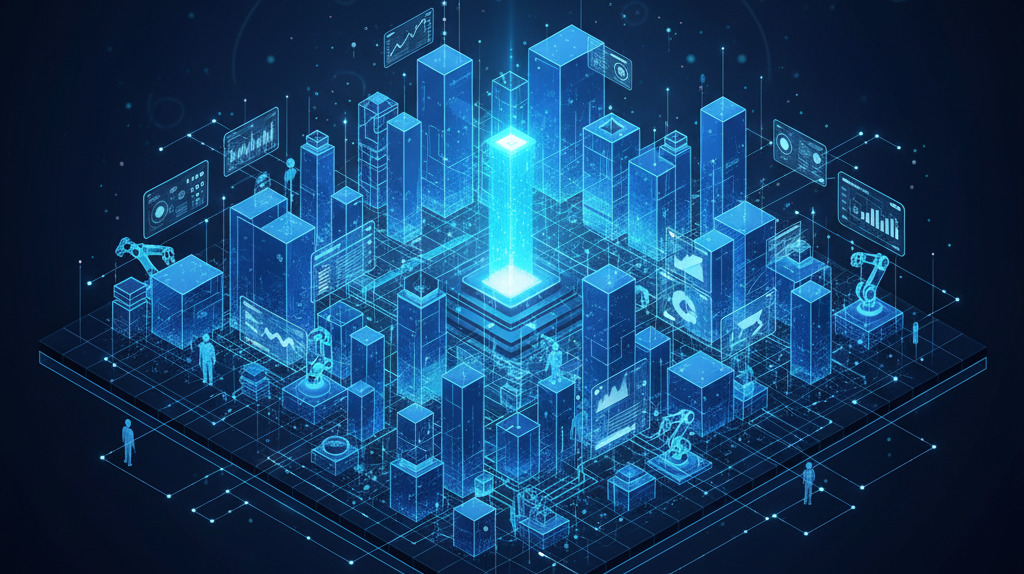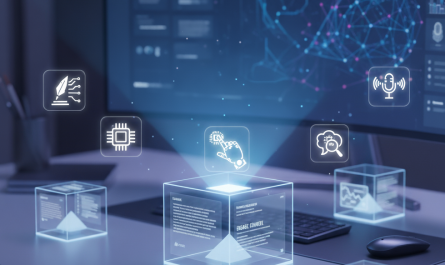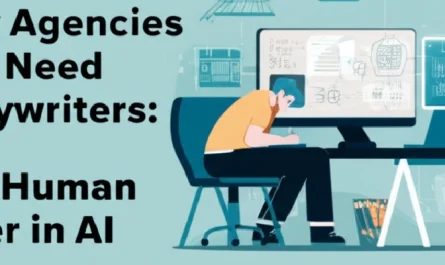Introduction
AI agents aren’t sci-fi assistants anymore. Instead, they’re powering the Next Wave of B2B Automation by booking meetings, qualifying leads, updating CRMs, writing follow-ups, routing tickets, and even operating software without APIs. As a result, if your B2B engine still relies on swivel-chair work and spreadsheets, agents offer the fastest path to fewer clicks and faster revenue.
The timing couldn’t be better. Enterprise AI investment is accelerating rapidly and shifting from pilots to practical value. According to IDC, organizations will spend $307B on AI solutions in 2025, with even faster growth expected through 2028–2029—fueling the Next Wave of B2B Automation. Furthermore, McKinsey’s 2025 State of AI report highlights rising adoption of agentic workflows and stronger bottom-line impact when companies redesign processes and add proper governance. Meanwhile, Microsoft’s latest Copilot Studio update enables “computer use,” allowing agents to click through apps and websites even when APIs don’t exist. The stack is finally ready, the ROI is proven, and competitors are already pressing go.
To keep this practical, we’ll break down what AI agents are, where they fit in the B2B funnel, what to measure, how to deploy safely, and a realistic 30-60-90-day rollout plan. If you’re comparing partners, remember that a seasoned Digital Marketing Agency or an integrated marketing agency in Bangalore can help connect these agents to your full go-to-market ecosystem—from media to CRM to analytics.
What exactly is an AI agent (and how is it different from a bot)?
An AI agent is software that can perceive, reason, and act to achieve goals while responding to feedback. Unlike basic chatbots that only answer questions, agents can perform actions such as submitting forms, updating records, scheduling tasks, and triggering workflows. With Microsoft Copilot Studio now enabling UI-level automation, agents can even click through systems without APIs.
Where this shows up in the Next Wave of B2B Automation
- Marketing: campaign QA, content briefs, audience research
- Sales: lead triage, scheduling, CRM hygiene
- Service/CS: L1 ticket resolution, RMA initiation
- Ops/IT: data normalization, onboarding, reconciliation
To support these use cases, platforms like Salesforce Agentforce, Microsoft Copilot Studio, ServiceNow Now Assist, and HubSpot’s Breeze agents are rapidly evolving.
The state of adoption (in plain numbers)
AI adoption is rising, but not uniformly. IDC forecasts $307B in AI spend for 2025. McKinsey reports a noticeable shift from pilot projects to scaled agentic solutions. In addition, HubSpot notes that nearly 20% of marketers plan to use AI agents for automation in 2025. Microsoft’s “computer use” feature is also enabling automation in legacy systems, unlocking workflows previously considered off-limits.
Although many firms remain early in their journey, this gap creates a major opportunity for proactive teams.
Where AI agents fit across the B2B funnel
1) Top-of-funnel (TOFU) and demand generation
Agents can generate research briefs, build ICP variations, and prepare ads. They can also conduct naming and policy checks before campaigns go live. Consequently, teams see faster creative cycles, fewer ad rejections, and improvements in CTR or lead volume.
2) Lead management and qualification
By triaging leads, enriching profiles, assigning owners, and scheduling meetings, agents significantly reduce speed-to-lead. They also improve SQO rates and pipeline cleanliness.
3) Sales enablement and deal orchestration
Agents help draft mutual action plans, summarize calls, detect risk signals, and assemble proposals or security questionnaires.
4) Post-sale and customer success
They resolve L1 tickets, suggest deflection articles, escalate issues with context, and predict renewal risks—nudging account teams at the right time.
Reference architectures for the Next Wave of B2B Automation
Core building blocks
- Reasoning model + policies
- Tool connectors (APIs, RPA, webhooks)
- Data layer (CRM, CDP, KB)
- Feedback loops
- Security + governance
Example stacks
- Salesforce-first: Agentforce + Data Cloud + Flow
- Microsoft-first: Copilot Studio + Power Automate
- Service-driven: Now Assist + Catalog workflows
How to prove ROI
Focus on a few hard KPIs per function.
Marketing:
- Cost per MQL/SQO
- Cycle time for content production
Sales:
- Meetings booked
- Lead response time
- Opportunity hygiene
Service:
- % auto-resolved
- First response time
Finance/Ops:
- Invoice cycle time
- Exception rate
McKinsey’s research shows that companies redesigning workflows—and adding clear human validation steps—see significantly better returns. Before deploying agents, benchmark performance for 2–3 weeks to measure impact accurately.
Build vs. buy
Buying platform-native agents delivers the fastest value. Building custom agents becomes critical when your processes are highly specialized. Most companies benefit from a hybrid approach: start with platform agents for 70–80% of use cases, then build customized agents for differentiated workflows.
Security, risk, and governance 🛡️
AI agents introduce new risks, including prompt injection and token misuse. Because of this, organizations must enforce:
- Least-privilege access
- Human-in-the-loop for high-risk actions
- PII and audit logging
- Red-team prompts before go-live
- Proper training and change management
These steps ensure your Next Wave of B2B Automation remains safe and reliable.
A practical 30-60-90 plan
0–30 Days: Foundation
- Choose a high-impact workflow
- Deploy a vendor agent
- Set metrics and baselines
31–60 Days: Expansion
- Add adjacent tasks
- Enable computer-use if needed
- Build red-team test cases
61–90 Days: Scale
- Reduce approvals where safe
- Tie agent activity to analytics
- Identify areas for custom agents
When to call in outside help
If bandwidth is limited, an experienced partner can accelerate strategy, governance, and cross-channel integration. A Digital Marketing Agency or integrated marketing agency in Bangalore can help tie your agents to the broader go-to-market workflow.
Conclusion
AI agents are no longer optional. The Next Wave of B2B Automation will reward teams that treat agents like teammates—with clear roles, guardrails, and KPIs. By starting small, measuring real outcomes, and scaling responsibly, companies can dramatically improve cycle times, pipeline health, and customer satisfaction.
Trending FAQs (with straight answers)
- Are AI agents ready for core go‑to‑market workflows?
Yes—for repeatable, rules‑based steps. Pair them with approvals for high‑risk actions and keep humans on relationship‑heavy tasks. - Which departments see value first?
Service (L1 resolution/deflection), SDR/BDR (scheduling, enrichment), and marketing ops (content ops, governance checks). - What’s the fastest proof‑of‑value use case?
Ticket deflection or meeting scheduling with CRM hygiene. You’ll see time‑to‑value in weeks, not quarters. - Do we need data scientists?
Not to start. Platform agents (Salesforce, Microsoft, HubSpot, ServiceNow) cover the basics; later, specialists help with custom tools and data. - How do we prevent hallucinations?
Ground agents on your data, add retrieval checks, constrain tools, and require human sign‑off for sensitive actions. - Will agents replace SDRs/CS reps?
They’ll replace tasks, not people. Humans handle nuance and trust; agents crush repetitive work and keep records immaculate. - How do we budget this?
Use a two‑part model: platform licenses + internal enablement. Tie funding to KPI lift (e.g., % auto‑resolved, speed‑to‑lead). - What about security and compliance?
Use least‑privilege, audit logs, and HIL gates. Follow vendor guidance and run regular red‑teaming. - Build vs. buy?
Start with vendor agents for quick wins; build custom agents for proprietary processes. - How do we keep teams on‑board?
Communicate the “why,” run training, and show personal wins (less admin, more meaningful work). Adoption follows when people see time coming back.
Some of the services that Clevertize provides are:
Creative Services, Performance & Digital Media Marketing, Visual Identity & Branding, Campaign Management & Analysis, UI/UX & Website design, Video creation, Media planning & buying, Chatbot & more. If Return on Investment is critical for you, talk to Clevertize!
Reach out to us at saumya@clevertize.com!





